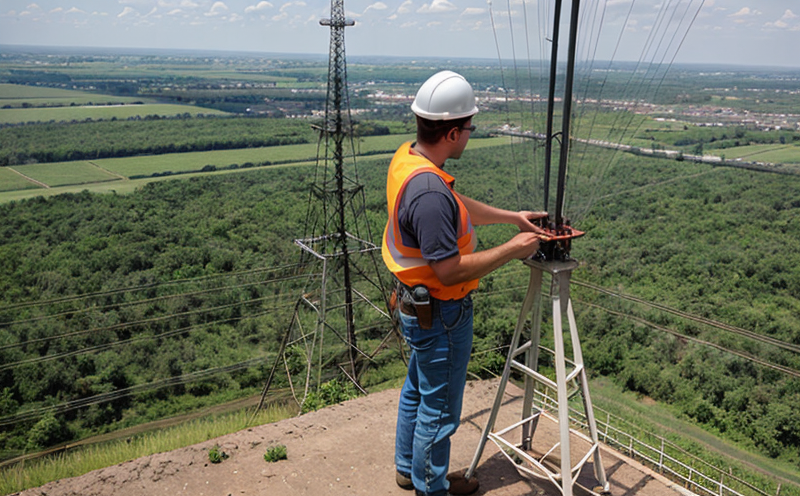Transmission tower inspection
The integrity and reliability of transmission towers are paramount in ensuring a stable and secure power supply. These structures not only support critical infrastructure but also operate in challenging environmental conditions, making regular inspections essential for maintaining their operational efficiency and safety. In the context of Energy Systems and Environmental Surveillance, transmission tower inspections serve as a cornerstone for proactive maintenance.
Transmission towers are subject to various types of wear and tear over time due to factors such as weathering, corrosion, and mechanical stress. Routine inspection helps in identifying potential issues before they escalate into major problems. This involves not only visual checks but also the use of advanced technologies that can assess internal and external conditions more accurately.
Standards and guidelines like ISO 19608:2015 provide a framework for conducting these inspections, ensuring consistency and reliability in practices across different regions. By adhering to such standards, organizations can ensure their inspections are thorough and meet international best practices.
The process of transmission tower inspection typically includes several key steps:
- Visual inspection
- Use of drones and thermal imaging cameras for detailed examination
- Evaluating structural integrity through non-destructive testing methods such as ultrasonic testing or eddy current inspection
- Checking for corrosion using techniques like electrochemical monitoring
The data collected from these inspections is crucial in predicting any potential issues and planning maintenance activities accordingly. This helps in minimizing downtime, reducing costs associated with unexpected failures, and enhancing the overall safety of the power grid.
In summary, transmission tower inspection plays a vital role in ensuring the longevity and reliability of energy systems. By adhering to international standards and employing advanced technologies, organizations can achieve more effective and efficient inspections that contribute significantly to environmental surveillance and energy security.
Applied Standards
| Standard | Description |
|---|---|
| ISO 19608:2015 | This standard provides guidelines for inspecting overhead transmission lines and towers. |
| ASTM E348 | American Society for Testing and Materials' guideline that specifies the practices used in the inspection of power line structures. |
Industry Applications
| Application | Description |
|---|---|
| Structural Integrity Assessment | Evaluating the physical structure of transmission towers for any signs of deterioration or damage. |
| Corrosion Monitoring and Prevention | Detecting and mitigating corrosion that can weaken tower components over time. |
- Data Collection and Analysis: Using advanced technologies to gather data on the condition of transmission towers, which is then analyzed to inform maintenance schedules.
- Environmental Impact Assessment: Assessing how environmental factors such as weather and pollution affect the performance and longevity of transmission towers.





